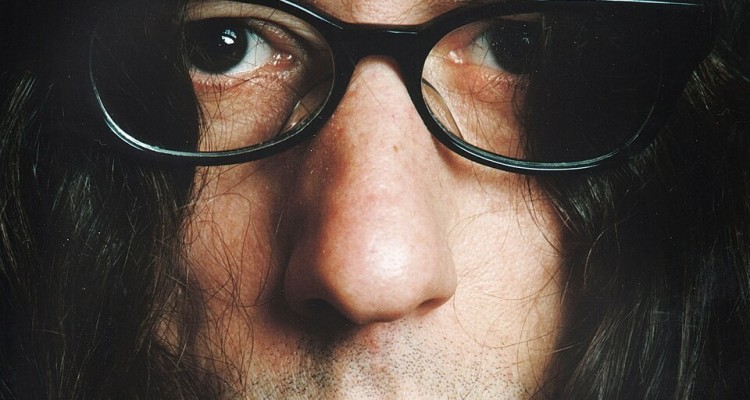This text is a reaction to Danny Trom’s article – “Israel: Towards a rupture? – in K., which discussed the dramatic course of events in Israel since the last elections and, in particular, the plans of the new government to change key aspects of Israel’s regime and identity. In it, Israeli scholar of modern Jewish history Amos Morris-Reich emphasizes what he believes is difficult to see clearly from Europe: Benjamin Netanyahu’s active role in Israel’s crisis and the extreme fragility of the unity of its society.

At this point, no one knows where the crisis will lead or how far it will escalate, but it is clear that in Israel’s history, this current crisis has surpassed even the existential crisis of the Yom Kippur war in 1973. The danger in 1973 was that the invasion of the Arab armies end “the third temple.” European Jews were alarmed, alerted, and mobilized. Now, for the first time in Israel’s 74-years of history, one hears and speaks about the possibility of, in Hebrew, a “brothers’ war,” or civil war. But why is it the case that, in contradiction to 1973, European Jews do not appear to perceive the danger in the current crisis in Israel?
My friend Danny Trom’s article[1] expressed the concern shared by many European Jews about the general direction of Israel under this new government, which is breaking with the spirit of Zionism from its inception in 1897 to the present. Its analysis drew on basic facts about the different components of the new government, including the dwindling liberal component of the Likud party, the Ultra-Orthodox historical ambivalence with regard to Jewish sovereignty, the evolution of the illiberal values held by the national religious parties, and their increasing nationalistic orientation. Everything that the article stated was correct, and as a reader, I agree with it. However, for Israeli observers of the situation, it is clear that the article failed to see the gravity of the danger, the completely unprecedented degree of polarization underlying the current crisis, and the fear of Israelis that the threshold from which there is no return has already been crossed. How could involved and astute observers of Israel miss the most explosive elements in the situation? How could they have not perceived that which, from Israeli eyes, can be seen so vividly about the situation and about its causes?
How can one explain that what is so visible in Israel is apparently so much harder to see from Europe? I can posit a hypothesis, even though I cannot prove it here. My hypothesis is that when European Jews look at Israel from Europe, it appears to them more solid and robust than it appears to the Israelis themselves. Whereas European Jews are acutely aware of the danger posed by Israel’s external enemies, it is less exposed and it may be incapable to see the extent that Israelis perceive Israeli society as internally fragile. If the sense of danger that Israelis sense, at the culmination of a long process that has brought things to their current extreme crisis, and above all, the cause of the situation are related to an internal rather than external danger, The text’s blind-spot is much less accidental than it would first appear. In a word, is it possible that European Jews can see external dangers to Israel but do not see the extent to which Israelis view the biggest danger to Israel in its own very fragile cohesion?
Danny Trom’s article failed to include the most significant cause of the crisis: Benjamin Netanyahu. Netanyahu is responsible for the current and, more importantly, for the long process that has culminated in this moment of extreme danger. To half of the Israeli population, Netanyahu’s corruptive and poisonous role in Israeli society is old news. Even before this extreme crisis, the depth and breadth of his role in the course that led to it was evident. From the mid-1990s to today, Netanyahu has fundamentally reshaped Israeli society and political landscape. From the Israeli perspective, the question of how Danny Trom managed to not see Netanyahu’s pivotal role is significant. We do not know if we are in an unfolding drama or tragedy, in terms of genre, but we know it is not a comedy. If we were not in this frightening moment, the absence of his personality and role from the analysis could have been viewed as verging on the comical. It is a spectacular form of not seeing, which must serve as a powerful instrument for the study of European Jewish sociology. While it is important to acknowledge Benjamin Netanyahu’s criminal charges (for instance, he has not carried a wallet for over thirty years, which raises the question of who pays for his expenses), as well as his moral corruption as a person as if this is necessary feature of political leadership, or even the mafia-like tactics against his opponents, these are not the only and not the most serious reason why people are protesting against him. Netanyahu has persistently prioritized his immediate gain over long-term consequences for the very fragile threads that hold Israeli society together, playing one part of society against another, disregarding any sense of integrity. It’s crucial that European Jews understands that this is what half of Israel is unwilling to forgive.
It is part of Israeli socialization, which one absorbs from young age into the military service, often around Tish’a Be’Av, the day of mourning that marks the destruction of both the temples, that the first and the second Jewish sovereignties ended in a catastrophe. Like its two distant predecessors, this Jewish sovereignty is comprised of diverse groups that differ from each other in every possible respect. Established out of the ashes of destruction in Europe, and against the fierce rejection of the Arab environment, the dangers that Israel faces are nonetheless always internal as well. One should never forget that internal conflict, which got out of hand, led to the destruction of the second temple by zealots committed to their cause. The Hebrew name for this “sinat hinam,” literally meaning “baseless or redundant hatred.” The danger of “sinat hinam” is always around the corner. We never forget that it led to the loss of sovereignty, destruction, suffering, and centuries of exile and powerlessness. Jewish sovereignty is fragile and demands tolerance to opponent factions of the Jewish polity. Israelis know that the eighth decade of sovereignty was a threshold that no post-biblical Jewish kingdom managed to survive. Allusions to this danger are widespread in Israeli culture, found in films, TV programs, civic education programs, public history books, and are a common theme in public discussion. They are also found in the statements of political leaders, such as Naftali Bennett recently, and the president of the supreme court, Esther Hayut, even more recently. “Baseless hatred” is always close by. The highest moral responsibility of the leader, more than anyone else, is to always safeguard Israel’s defense from its external enemies and to navigate a whole comprised of such different components without ever allowing it to deteriorate into “baseless hatred.”
And this is exactly Netanyahu’s immoral and unforgivable trait. For decades, since the early 1990s, in a strategic, systematic, and intentional manner, and most of the time while serving as Israel’s prime minister, Netanyahu has pitted Israelis against each other. He has always done this for his own immediate political gain, and Israelis have been exposed to and have long perceived this. Yet, from K’s response, it appears that this essential component of the present conflict has not been grasped by European Jews who follow Israeli history, culture, and society. From the incitement that led to the assassination of Izhak Rabin, to incitement against secular Israelis (“The seculars have forgotten what it is to be Jews”) and against the left (“left-wingers are traitors”), to the incitement against the Arab citizens of Israel (“The Arabs are going in hordes to vote” or “It’s Bibi or Tibi”), setting the “second Israel” against Israel’s “elites,” setting Mizrachim against Ashkenazim, and the list goes on and on. Rather than strengthening its cohesion, Netanyahu always sets one group against the other.
Historians will judge whether Netanyahu is guided exclusively by cynical political motivations, instruments to perpetuate his rule, or whether these represent his genuine beliefs, or whether there is even a difference between the two. Without Netanyahu and his mode of operation, it is impossible to understand not only Israel’s current coalition, but, more importantly, the process that led to Israeli society being on the cusp of civil war. The sewing of hatred and contempt is done from the position of power, abusing the state’s institutions, without a shred of decency and irrespective of the grave danger of threating the fragile threads that hold the whole together. For Israelis, this is not only morally corrupt, but it is also historically reckless.
Danny Trom’s text repeating of the old definitions of the parties that make up Netanyahu’s government proves that it does not see how the social and political landscape has been restructured, the dividing lines redrawn and dramatically polarized during Netanyahu’s years of reign. Those old truths are an obsolete description of Israel’s landscape. Before Netanyahu, Israeli society was x, but now it is y. In x, it was comprised of a variety of groups based on national, religious, social, and economic backgrounds, as well as political orientations. These groups together formed a delicate, pluralistic society sharing some but not all grounds on a variety of evolving subjects and interests, making possible coalitions based on changing conditions, agendas, and interests. Today, in y, Israel is split into two deeply polarized and antagonistic groups. Many Israelis feel that whatever the current crisis leads to, the red line threshold has already been crossed, and it is difficult to see how these two polarized and antagonistic groups can continue to live together in the same society.
The devastating process of polarization can be understood through the idea of compatibility. In one of his lectures, Saul Kripke speaks about compatibility by using the example of two people disagreeing about whether an object is a chair or a bench. Although they may disagree about how to designate the object, their designations are still compatible with each other. Their designations would be incompatible if one claimed it was a chair and the other claimed that it was an avocado. This example can be useful for understanding what has happened in Israel following Netanyahu’s long years of sewing division and contempt, where Israel is what one is designating. Netanyahu has driven Israeli society to the point where two rival groups’ designations are incompatible. As if this were not bad enough, his current coalition, backed by the most extreme parts of Israeli society, including elements that are messianic, fascist, criminal, and politically illegitimate, is trying to change core aspects of Israel’s regime for the direct benefit of its components by way of swift, broad, radical, and irreversible steps.
Danny Trom stated that the Israeli government is taking Israel in the wrong direction, but it failed to represent how it was leading Israel towards the brink of civil war. The interplay of compatibility and incompatibility in Israeli society has changed. Although the current events are still unfolding, and they do not have a name yet, it is possible to say tentatively that the clash centers on the state of Israel as it was established in 1948 and the principles that were expressed in the Declaration of Independence. This includes upholding the rule of law, equality before the law, belonging to the family of nations and abiding to international law and international institutions, Israel as a Jewish and democratic state, civic equality, minority recognition, and a vague but explicit commitment to liberal democratic values. In short: the two polarized understandings of 1948 have reached the point of incompatibility.
The author used the traditional terminology to describe Netanyahu’s coalition primarily focused on the secularist and traditionalist factions of the Likud party, as well as its diminishing liberal contingent. It also noted the Ultra-Orthodox parties’ opposition to Zionism, the Messianic beliefs of the national religious party, and the extreme-right wing’s homophobic, misogynic and racist views. While the terminology is correct because it is historically the case, it fails to grasp that because the underlying conditions have transformed, this terminology has become obsolete. Although these factions could, in theory, be incompatible, they are not. They share a common goal of undermining the identity of the state of Israel as it was established in 1948. And how can we know this if at least part of the coalition denies that this is the case? It can be seen through the avalanche of laws they are trying to pass, their actions, planned laws, assumptions and motivations behind their actions, and the intended outcome of these actions (such as granting the ultra-Orthodox exemption of military service, annexing the occupied territories without equal rights to the Palestinians for the national religious, and subordinating the supreme court to the current coalition). In practice, these measures aim to transform Israel into a different state and to create the conditions that will promise their indefinite grip on power.

1948 as the implicit watershed can also be shown with regard to the opposition to the current coalition. Whether they adhere to social democratic values, like Meretz or the Labor Party, or outright capitalist and centrist values, like Yesh Atid, or right wing–centrist values like Blue and White, or extreme right wing values like Gideon Saar’s party or Avidgor Lieberman’s party, they all have a vague commitment to 1948. This shared commitment is what makes them compatible with each other, regardless of their differences.
When Danny Trom that the previous government only shared the rejection of Netanyahu, it failed to understand what the rejection or endorsement of Netanyahu represents. The rejection of Netanyahu is not just a personal rejection of him due to his criminal charges. It is a rejection of the attempt to break free from the principles that Israel was founded upon established in 1948. Vaguely, it relates to the idea of equality, which is a fundamental component of the Declaration of Independence, as well as the Jewish and liberal democratic value that the majority does not oppress the minority. At its core, this rejection represents commitment to decency – human, moral, and political decency.
The current binary situation we find ourselves is not an accidental development, solely due to Netanyahu’s personal legal situation or his tainted reputation. Rather, it is the result of a long process. Therefore, an accidental or momentary blind spot is not the reason why Danny Trom failed to see this. Israelis’ rejection of Netanyahu is not just about his (conscious?) stream of lies, half-truths, misinformation, and alternative facts. There is something deeper at play here. The rejection is based on a commitment to the principles established in 1948. The polarization engineered by Netanyahu has even split the Arab parties and Arab citizens of Israel, who are often ambivalent and hesitant to view the “Jewish wars” as “theirs”. Manzur Abbas, who joined the previous coalition, stated that “yes, yes, Israel was and will remain a Jewish state.” On the other hand, Ahmad Tibi and Ayman Uda joined Netanyahu in fighting against that coalition, causing it to fall, and rejoiced at its demise. The rejection of 1948 is not exclusively a Jewish issue, and the motivations vary. However, it seems that here, opposites meet.
It is for these reasons that Danny Trom’s statement, while entirely correct, was, in Israeli eyes, a remarkable expression of looking without seeing. At this momentous juncture, in face of the gravest and most extreme crisis of Israel’s 74-years existence, one cannot afford to overlook what is right in front of them.
Amos Morris-Reich
Amos Morris-Reich est professeur à la faculté des Humanités de l’Université de Tel Aviv, chercheur au Cohn Institute for the History and Philosophy of Science and Ideas, et directeur du Stephen Roth Institute for the Study of Contemporary Antisemitism and Racism.
Notes
| 1 | Danny Trom and Amos Morris-Reich’s co-wrote in K. On the Gray Area: Antisemitism and the Lexicon of the Israeli-Palestinian Conflict |










